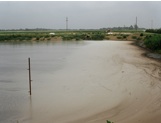
News
Ensure adequate manure storage capacity
December 9, 2010 by University of Wisconsin Discovery Farms Program
 December 1, 2010 – The
December 1, 2010 – The
onset of winter has come to Wisconsin. The soils have begun to freeze, but much
of Wisconsin has little to no snow cover on the ground. This is likely to
change in the upcoming weeks. The long-range forecast for this winter is to
have cooler than normal temperatures and higher than average snow fall.
December 1, 2010 – The
onset of winter has come to Wisconsin. The soils have begun to freeze, but much
of Wisconsin has little to no snow cover on the ground. This is likely to
change in the upcoming weeks. The long-range forecast for this winter is to
have cooler than normal temperatures and higher than average snow fall.
 |
|
Wisconsin Administrative
Code Chapter NR 151, Runoff Management, establishes runoff pollution
performance standards and prohibitions for agricultural practices. New or
substantially altered manure storage facilities (after October 1, 2002) must
maintain one foot of freeboard storage or adequate freeboard storage to the
equivalent of a 25-year, 24-hour storm (whichever is greater). Manure storages
built before October 1, 2002 should still utilize this standard as a guideline
to prevent the overtopping of manure storage facilities. Manure Management Prohibition
NR 151.08(2) states, “A livestock operation shall have no overflow of manure
storage facilities.”
To prevent the overflow of
manure storage facilities, ensure that there is ample storage volume in the
late fall and early winter months. If it is questionable, now is a relatively
good time for manure applications. Soils are cold so nitrogen credits will be
maintained and there is little to no snow on the ground at this point. The
likelihood of runoff at this time of year is much less as compared to the
spring period when manure storages tend to be close to overflowing. The forecasted
spring thaw is to be later than normal this year.
Discovery Farms data has
shown that applications during this time of year have a reduced potential for
loss as compared to applications on soils with a snow pack. It is believed that
the more snow pack that is between the soil surface and the applied manure, the
higher risk for loss.